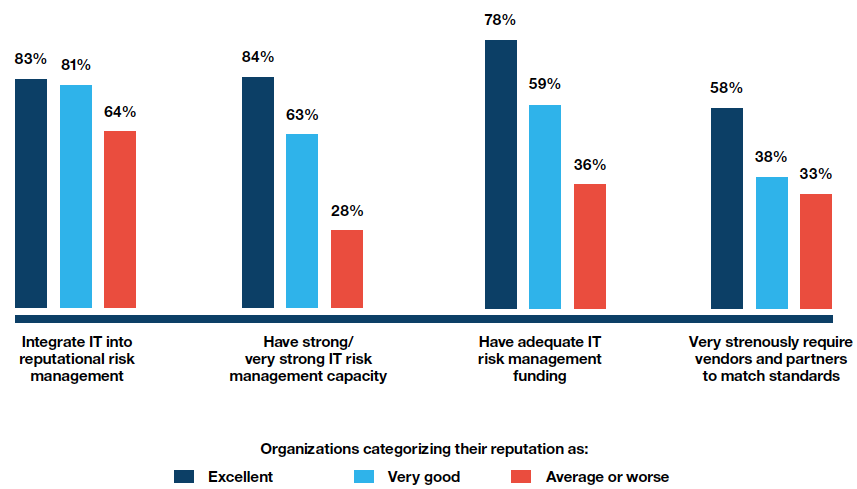Superstorm Sandy wreaked havoc not only on the people of the tri-state area, but also on insurance companies. In a recent edition of Credit Matters, a talk show produced by Standard & Poor’s, Taoufik Gharib, director of S&P’s insurance sector, discusses the insurance lines most affected by Superstorm Sandy, the uncertainty that remains in industry loss estimates and the potential for ratings action that may still result.
Author Archives: Emily Holbrook
Regional Conflicts in Workers Compensation
This week I attended the 21st Annual National Workers Compensation and Disability Management Conference & Expo in Las Vegas. Among many of the sessions offered was one addressing the regional conflicts in workers comp. I sat in on the session addressing workers comp issues in the Northeast. Along with the moderator, there were three individuals representing the TPA, the carrier and the employer.
- Steve Gidwitz, COO, NCA Comp, Buffalo, New York (TPA)
- John Leonard, president and CEO, Maine Employers’ Mutual Insurance Company, Portland, Maine (carrier)
- Richard Graham, corporate director, insurance and risk control, Crozer-Keystone Health System, Chester, Pennsylvania (employer)
- Maureen McCarthy, senior vice president, Liberty Mutual, Boston, Massachusetts (moderator)
McCarthy began by addressing the economy and how it’s affecting workers comp in the Northeast and, more specifically, how it has impacted getting people back to work.
“In the health care system since 2007 we’ve had several layoffs,” said Graham. “The focus on impatient to outpatient care is the next big thing. We’ve actually had to shrink the workforce inside the hospitals.”
“In New York, before comp reform in 2007, the average weekly indemnity claim was $400, now it’s $702,” said Gidwitz. “Light duty or return to work programs are more important than ever.”
“The Northeast is the old rust belt — old union labor,” added Graham. “The economy has changed in terms of what drives it — meaning less manufacturing. We’re going through a transformative process in which we’re trying to interrupt the whole culture of the organization. Getting back to owning one’s job is important.”
McCarthy then questioned the panel about the consequences of recession in terms of fewer jobs and, maybe more importantly, an aging workforce in those positions that have weathered the storm. She referenced a study by Reuters, which states that during the peak of the recession, job loss in the private sector was 5-7% and 3-10% in the public sector. Another statistic stated that in 2000, 34% of workforce were 45 or older. Today that same statistic is 42%. The workforce is older than it was 10 years ago and continuing to get older. How has that changed workers comp, she asked.
“It has caused a shift in thinking at [the National Council on Compensation Insurance] in regards to younger workers getting injured more frequently than older workers,” said Leonard. “We see that it’s not related so much to age, but time on the job at that position. There is a dynamic shift underway that’s taking away the concept of age and focusing on time at work. New hires are more likely to be injured. Also, the nature and severity of injuries are increasing because as the workforce ages, the time it take to heal increases.”
McCarthy noted that a more mature workforce isn’t necessarily a bad workforce. “They tend to be more trained and well-versed,” she said. “However, when they are injured, it will take longer for them to return to work.”
Gidwitz and Graham said the focus should be on training. “When you get new employees, regardless of age, you must spend the time to train them properly,” Gidwitz said. “If they’re not trained properly, they develop bad habits and keep those bad habits.”
Graham took a tougher stance. “Do the employee a favor — sometimes you do them a favor by walking them out the door in the first 90 days,” he said. “On day 91, you’re stuck with them [if they are not following the training properly].”
In terms of obesity, Graham said it’s a national problem, not just an issue within the workers comp sector.
“We’ve got some transformative issues to go through as a country,” he said. “If your knee injury is because you’ve been morbidly obese your entire life, then is comp supposed to pick up half?”
“By 2020 or 2030, the percentage of people overweight or obese will be 80-85%,” noted Leonard. “As you look down the road, you have an older worker with physical problems due to lifestyle and you have the development of a crisis.”
Graham followed with his view on the obesity epidemic and its impact on workers comp. “The number of knee replacements that I’m paying for boggles my mind,” he said. “This person has been morbidly obese for 20 years and you’re telling me the knee replacement is work-related? There’s a storm coming — look at our workforce, look at the age, the health. We actually had a medic who had a heart attack while performing CPR.”
The Leaders of Italy’s Disaster-warning Agency Resign
The head of Italy’s disaster-warning committee, Luciano Maiani, has resigned in protest over the sentencing of seven of the organization’s members for underestimating the risks of a deadly 2009 earthquake. The commission’s vice president, Mauro Rosi, and president emeritus, Giuseppe Zamberletti, also resigned.
The April 2009 earthquake rocked the central Italian town of L’Aquila, killing 309 people and leaving thousands homeless. The seven defendants were members of the country’s Major Risks Committee, which met in L’Aquila March 31, 2009 — six days before the 6.
3-magnitude quake struck. The seven have been found guilty of manslaughter, accused of providing “inaccurate, incomplete and contradictory” information after small tremors were first felt.
Maiami, one of Italy’s top physicists and a former head of the top partical physics laboratory Cern in Geneva, criticised the verdict as “a big mistake.”
“These are professionals who spoke in good faith and were by no means motivated by personal interests, they had always said that it is not possible to predict an earthquake,” he told the Corriere della Sera newspaper.
“It is impossible to produce serious, professional and disinterested advice under this mad judicial and media pressure. This sort of thing doesn’t happen anywhere else in the world.
buy finasteride online www.methanol.org/wp-content/uploads/2022/08/png/finasteride.html no prescription pharmacyThis is the end of scientists giving consultations to the state.”
The seven defendants were given six-year prison sentences and they, along with the Prime Minister’s office, were ordered to pay 7.8 million euros in damages.
There has been an outcry from both the Italian and international scientific community, who say these individuals shouldn’t be punished if their forecasts don’t come true.
The American Association for the Advancement of Science has has called the convictions “unfaire and naive,” while the The Guardian has written that “few scientists will want to take responsibility for similar statements in the future.”
Scientific American takes a different stance, however. Risk perception consultant David Ropeik, in a guest blog post for the publication, feels the Italian scientists were at fault for failing to communicate the risks to the public. It’s tough to disagree with Ropeik.
The meeting that was held six days before the earthquake was called after a swarm of tremors shook the area. Seeing this as no major reason to expect an earthquake, the group gathered for what they called a media operation — basically, a meeting to calm the public’s fears, when what they should have been doing was preparing the public in case a major quake were to follow the tremors. Even worse is the following:
In a leaked telephone call, Guido Bertolaso, then head of the civil protection agency, told a local official that he was calling the meeting as “more of a media operation.” The top civil protection official at the meeting, Bernardo De Bernardinis, said in a television interview that residents faced “no danger” and should sit back with a glass of wine – recommending a Montepulciano.
Six days after that Montepulciano recommendation, 309 people were dead. And though a six-year sentence seems too harsh, someone must be held accountable — not for failing to predict, but for nonchalantly failing to educate and warn the public of what could occur.
The Reputational Risk and IT Relationship
With more visibility and vulnerability in today’s business landscape due to social media, online commerce and doing business through mobile devices, it only makes sense that there would be more potential risks to a company’s reputation and brand. In fact, now more than ever, executives are attempting to protect their brands from these security threats by being more proactive and looking for blindspots in their risk management program. That’s according to findings from the “2012 IBM Global Reputational Risk and IT Study,” conducted by the Economist Intelligence Unit, which analyzed responses from 427 senior executives from around the world, representing nearly all industries.
Respondents indicated that cybercrime is more of a reputational threat than systems failure — a finding that clearly illustrates how cybersecurity is a growing concern among executives, as shown in the following graph from the report.
What’s more, 64% say their company will put additional effort into managing its reputation in the future while 75% of respondents say their IT budget will grow over the next 12 months due to reputational concerns. “Underestimating the cost of reputational risk greatly exceeds the cost of protection,” said one U.S.-based study participant. “Being proactive is preferable to being reactive.”
As the report states:
Going forward, assessing potential blind spots and new technologies will likely be accelerated through the use of case studies and scenario analysis rather than waiting for direct experience. “To use new technologies like cloud you need trust,” says Andrea MacIntosh, director of quality with Alpha Technologies in British Columbia, Canada. “How do you build trust? Either by demonstrating performance or through looking at comparable organizations that are using it with good success. I think there’s a lot of referential data for companies like ours, but as with any new technology, you’ve got to be cautious.”
So how does a company avoid data breaches and strengthen the public’s trust in its brand? The respondents feel that integrating IT into reputational risk management, along with having a strong IT risk management capacity, is the best bet.
Gone are the days when a customer inherently trusts that a company’s IT capabilities are sufficient. In fact, customers are taking a more proactive approach when it comes to understanding a current or potential business partner’s IT infrastructure. “We’re seeing more requests from our customers for details of our IT infrastructure and security, along with on-site audits, as part of the supplier qualification process,” said MacIntosh.
Organizations of all sizes across all industries are devoting more time and attention to potential cyber threats that could harm their reputation. “This concern is reflected in more integrated, enterprise-wide approaches to risk management led from the C-suite and increased attention being paid to the direct reputational impacts of IT risks,” the report states. This study, along with many others, point to the conclusion that cyber and data security has earned top billing in the list of biggest risks posed to businesses. How is your company responding?



